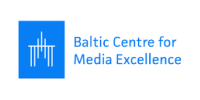Mitigating (Dis)information Vulnerability With Situational Risk Awareness And HumanCentered Approaches: A Conceptual Model (2023)
Mitigating (Dis)information Vulnerability With Situational Risk Awareness And HumanCentered Approaches: A Conceptual Model
2023
Auksė Balčytienė | Senior Researcher, VMU
Dmytro Iarovyi | Junior Researcher, VMU
…with help and input from others in BECID’s research team, led by BECID’s Principal Investigator, Professor Andra Siibak, UTARTU
Part of D3.1 of the EU-funded project with the ID 118471, coordinated by the University of Tartu (UTARTU).
This analysis delves into the concept of (dis)information vulnerability, outlining the determining factors according to which individuals and groups are susceptible to the detrimental consequences of the supremacy of online manipulations.
Defining the concept of “(dis)information vulnerability” is a challenging matter because of its multi-dimensionality and particularity, which depend on individual characteristics and contextual conditions. Hence, this paper integrates human-centred aspects of information processing by incorporating individual (socio-demographic characteristics, such as age and education) along with socio-psychological capacities like self-efficacy assessments and values, which become particularly crucial in decision-making situations that are prone to conflicts and disagreements. Additionally, the approach incorporates socio-structural and situational features prevalent in contemporary media and communications.
The starting point here, specifically, is based on the notion that information manipulations are significantly influenced by digital technology and information accessibility, but, most importantly, also by national contextual specificities, namely the socio-cultural values and traditions in information provision and use. Among those are the defining characteristics of agenda setting and representations within the media, but, most importantly, individual factors, such as individual accessibility to media and digital skills, as well as socio-psychological aspects, including various (cognitive) biases, media awareness and related factors of moral reasoning in decisions making and information processing.
In this context, universalist policy-making requires heightened sensitivity and awareness of the risks associated with the spread of manipulative content and individual actor responses to dysfunctional communication situations. It is important to consider that although (dis)information vulnerability has become a part of the media policy debate, it nevertheless remains a domain of expert knowledge. Solutions are generated by taking a perspective “from above”, such as proposing media literacy programs or advancing fact-checking by media organisations. Despite these efforts, there is insufficient knowledge and a lack of evidence-based understanding about the scope of effects of detrimental content on people’s reasoning, thereby influencing societal integrity. Thus, the emphasis lies in assessing conceptual definitions and research findings that illuminate the risks of (dis)information vulnerability. In the end, a conceptual model is proposed, which integrates all these critical aspects.
Read the analysis here: D3.1 (2) Mitigating Disinformation Vulnerability





